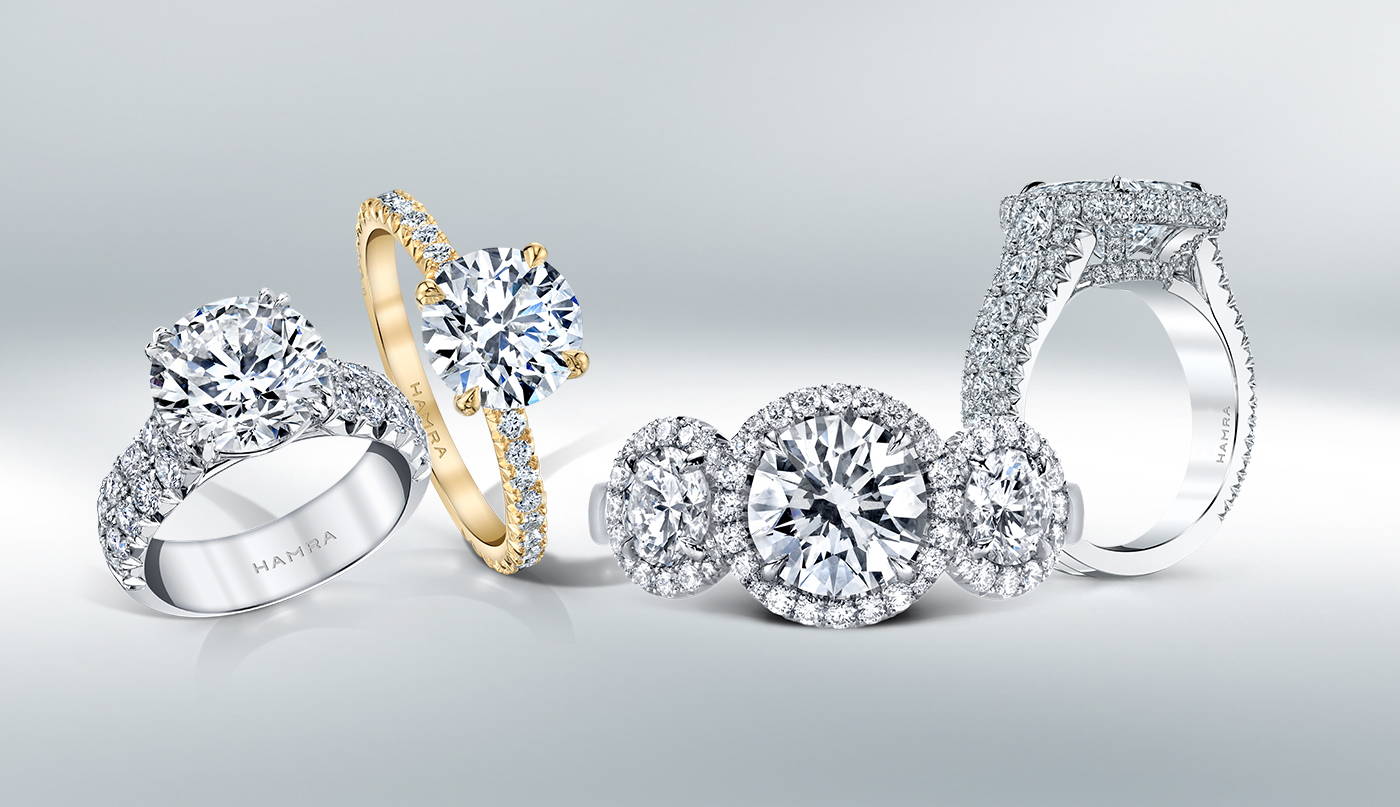No Products in the Cart

Shopping for an engagement ring is a big undertaking. Even when you know your significant other will say yes, there is always a bit of nervousness that comes once you start ring shopping.
At Hamra Jewelers, we know of two ways to calm the nerves: Take a deep breath and learn all the right ring terminology. Knowing what you are looking for and what to call it will make you feel much more at ease.
The center stone is responsible for the classic engagement ring look. It is usually the largest stone on the ring and serves as the focal point for the piece.
The prongs are the part of the ring that holds the center stone in place. Usually, a diamond or gemstone ring will have at least four prongs, though six-prong and eight-prong styles are also quite attractive. Though prongs come in many different styles, including tulip, v, and double, a straight prong is the most common.
A trendy alternative to prongs is a bezel, which surrounds the center stone to hold it securely in place. This is most common in rings that feature a round center stone, though square and rectangle stones also work well with a bezel.
The head of the ring is the center stone and prongs (or bezel) combined. The head may be attached to the ring by a post at the bottom or it may be molded into the rest of the ring in one piece.
In a three-stone style ring, the center stone will be flanked by another stone on each side. These show off the center stone and add more sparkle to your ring. Your ring may also include accent stones, which are additional stones that go along the shank of the ring. Typically, these are smaller than the side stones, though this depends on the ring and your tastes.
The gallery is the term for the side view of the head and side stones. This may be left plain or may be decorated with extra stones or scrollwork, depending on the designer. Some couples prefer to have a more ornate gallery to add visual interest to a relatively plain part of the ring.
The shoulders are the top part of the circular part of your ring, and slope away from the head. They typically are what will bear the side stones, and depending on the ring style, may form a simple circle or slope more upward to the center stone. The latter is called a cathedral setting because it resembles the arched ceiling of a cathedral.
The shank is the side and bottom of the ring and is sometimes mistakenly called the band. The shank may be a straight piece of metal or may be split to resemble two pieces that join farther down the ring. It may be engraved, set with accent stones, or left plain, depending on your tastes. If your ring needs to be resized, the shank is the part of the ring that will be adjusted.
The setting and mounting of a ring are often confused. The mounting refers to only the metal parts of the ring before stones are added. The setting comprises both the metal elements and all stones except for the center stone.
If you are purchasing an engagement ring as part of a bridal set, you may also purchase a ring jacket or wrap. These are special wedding bands designed to pair seamlessly with your engagement ring. Typically, a ring jacket or enhancer looks like two bands connected at the bottom by a thin bar or two. Your engagement ring is then inserted between the bands for a boost in sparkle and a secure fit.
A ring wrap may include side or accent stones and fits against the edge of your ring to give the appearance of a more ornate design. Often these work best when paired with a solitaire style ring, but can be customized to fit any ring beautifully.
Are you looking for the perfect engagement ring or bridal set? We at Hamra Jewelers take pride in our ability to help our valued customers pick out the perfect piece. To learn more or to schedule an appointment, give us a call at 480-946-5110.